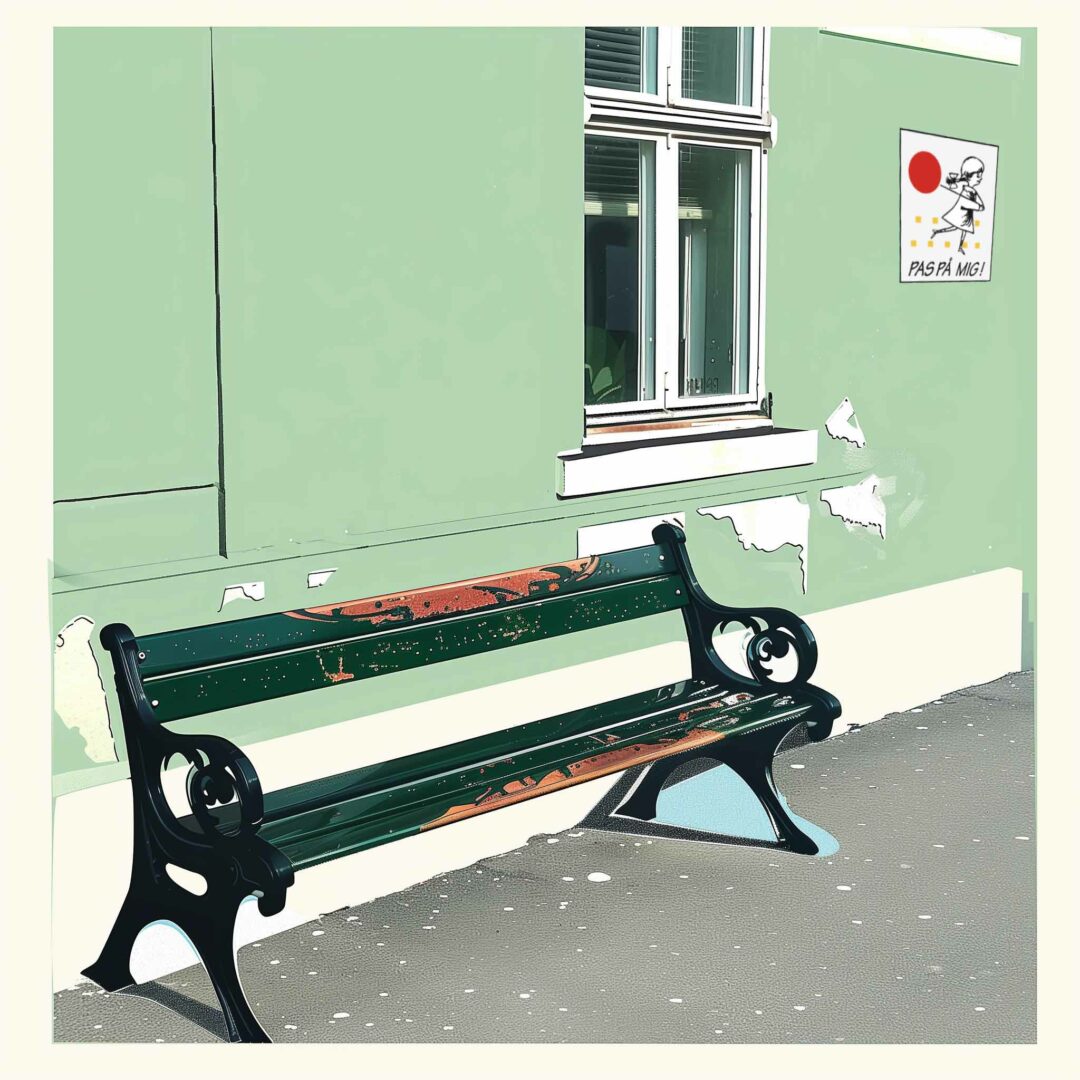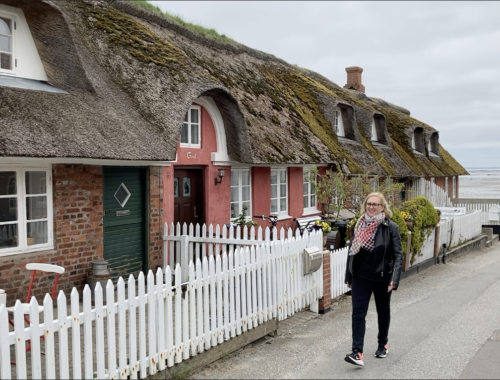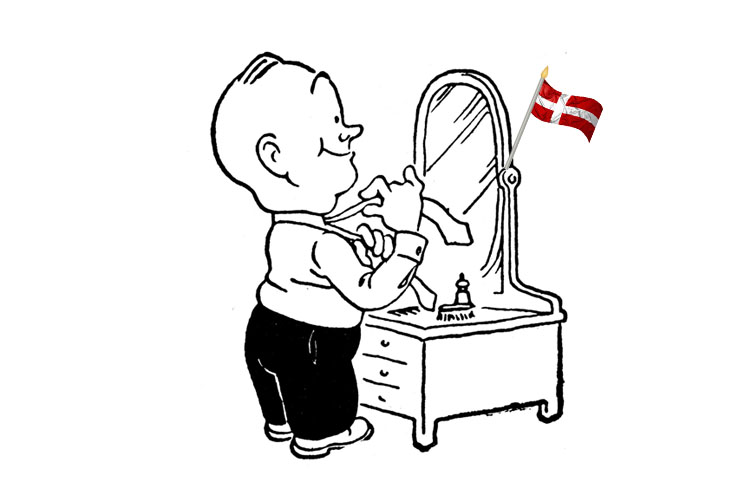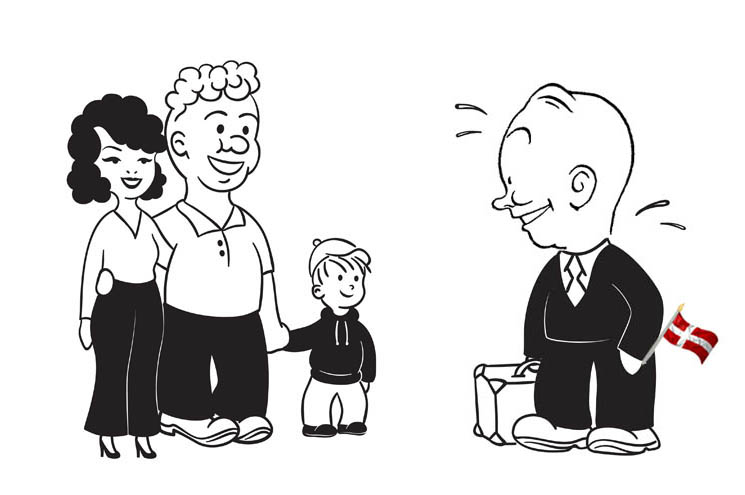It’s summertime, the top tourist season in Copenhagen, and the streets and the bike lanes and the harbor boats are full of people from around the world. One of the things they come to look at is Danish design.
I’ve created a new audio tour of Danish design in Copenhagen via Voicemap, but I thought I’d share a few quirks of design in Copenhagen that are not in the tour.
First of all, did you know that Copenhagen has its own color?
It’s called Copenhagen Green, and it’s a dark emerald green, mixed with a fair amount of black. A little like the dark green we see on the leaves of trees here in August. Pantone 3435C, for you designer types.
Green and black blend well
You’ll notice that all Copenhagen benches are this color, and there are thousands of these wood and cast-iron benches around town. They were originally designed more than a hundred years ago by Thorvald Bindesbøll, an art nouveau master also known for the Carlsberg beer label.
You will see Copenhagen Green on many wooden doors and window frames in the old city, as well as lamp posts, railings, even small bridges in the beautiful Ørsteds Park, all painted Copenhagen Green. This was a conscious decision by city leaders in the early 1900s.
They felt the combination of green and black blended well with both natural and urban settings and using it widely would create a sense of harmony. Plus almost everybody likes green.
Harbor swimming
These days, of course, Copenhagen is very proud of its environmentally friendly profile, a different type of green, and one aspect of that is that the water in the city harbor is very clean.
Copenhagen is designed around its harbor – the city name means “merchant’s harbor” – and forty years after de-industrialization, the harbor is safe to swim in. At least, it’s safe to swim in the eight harbor zones set aside for swimming.
Some people believe the clean water means they can swim anywhere in Copenhagen harbor, but they don’t always stop to think about boats.
There are lots of boats in the water, with big metal propellers, and they are often driven by amateurs who have just rented a boat for the day. If a swimmer meets a propeller, the propeller wins. So, enjoy swimming in the harbor, but do it within the specified swim zones.
Buildings with corners cut off
On land, one unusual safety measure you will notice in the old city is that many of the buildings have their corners cut off at intersections.
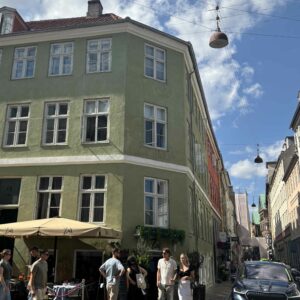 Their square corners have a triangle cut off, just as you might fold down the corner of a book to keep a page.
Their square corners have a triangle cut off, just as you might fold down the corner of a book to keep a page.
This is actually a fire safety measure. Like many European cities, Copenhagen suffered from massive fires in the 1700s. One fire burned down about 30% of the city.
The fire-fighting teams of the time were made up of horses with wagons, and they had a hard time turning around the standard square corners. So, after the big fires, new buildings were required to have cut-off corners that were easier to maneuver around.
These buildings are no longer new, of course, they’re centuries old by this point, but you’ll see plenty of them in the old city, including on the shopping street. They’re about four stories tall.
Skyscrapers with round shapes
Many newer buildings in Copenhagen, at least the skyscrapers, have no corners at all. They’re cylinders, round, or are mostly made up of curves. You can see one of these across from Tivoli, it’s called Axel Towers, and the towers look like three golden beer cans, held together with a kind of curvy web.
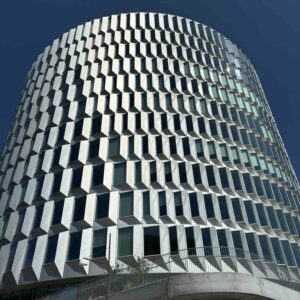 There are a couple in Nordhavn, the renovated harbor district, cylindrical office buildings and apartment made out of old grain storehouses. And there are several huge cylinders going up behind the main train station on the old Post Office grounds, which include the headquarters of Danske Bank, Denmark’s biggest bank.
There are a couple in Nordhavn, the renovated harbor district, cylindrical office buildings and apartment made out of old grain storehouses. And there are several huge cylinders going up behind the main train station on the old Post Office grounds, which include the headquarters of Danske Bank, Denmark’s biggest bank.
Danish design with an organic feel
Danish design loves curves. You can see that in the benches, with their curvy cast-iron armrests, and you can see it in classic Danish design furniture, like Arne Jacobsen’s Egg Chair and Swan Chair. You can see it in Georg Jensen’s silver pitchers and fruit bowls. It’s simple, with an organic feel.
And you’ll see this curved feeling a lot in the architecture of Copenhagen.
You’ll see it on the bicycle bridges over the harbor, for example, which have a very curved, streamlined feel. So do many of the bike highways through the city. They’re not straight, they’re curved. And much of the city metro runs in a ring formation.
The metro is gorgeous – new, clean, unified in tones of silver and grey with a touch of red here and there, and they’re constantly opening new stations. They just opened three new ones a couple of months ago.
The exception that proves the rule
Generally Copenhagen is a beautiful, clean, and well-organized city. There’s a real sense of urban harmony. But….the exception proves the rule.
There is one place in this beautiful, clean, well-organized city that is ugly, dirty, and very badly organized, and I’m telling your about it because you’ll have a very difficult time avoiding it.
It’s called Nørreport, or North Door. It used to be a door in the old city wall.
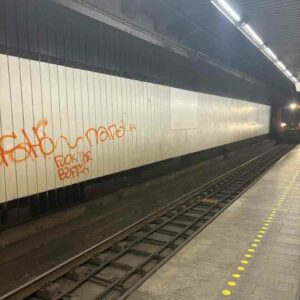 Now it’s a transit point where six different types of transport meet up – the metro, the S-train, the train over the bridge to Sweden, the regional trains, city buses, and taxis – they all meet up here, so you are very likely to go through it during your time in Copenhagen. And it’s hideous.
Now it’s a transit point where six different types of transport meet up – the metro, the S-train, the train over the bridge to Sweden, the regional trains, city buses, and taxis – they all meet up here, so you are very likely to go through it during your time in Copenhagen. And it’s hideous.
It’s dark, filthy, smelly, and usually packed full of people you’d rather not meet, such as pickpockets. There’s ugly graffiti, and water dripping down the walls. It’s like the worst of the New York City subway.
Competitive with the Swedes
The amazing thing is that Nørreport was renovated 10 years ago and looked nice for about 15 minutes and then went right back to being ugly again.
One of the ironies of this is that Danes are very competitive with the Swedes, and they would probably say that Danish design, including Danish urban design, is much better than the Swedish version.
Yet, on this train line to and from Sweden, the Swedish stations are gorgeous works of civil engineering. Get on at, say Triangeln on the Swedish side, and it’s lovely. Malmö Station even has art videos in on the platform for you to watch as you wait.
Then your train arrives at Nørreport and its like descending into the seventh circle of hell.
Anyway, Copenhagen is a fabulous city with just a few charming quirks and oddities. Nørreport is just the exception that proves the rule.

